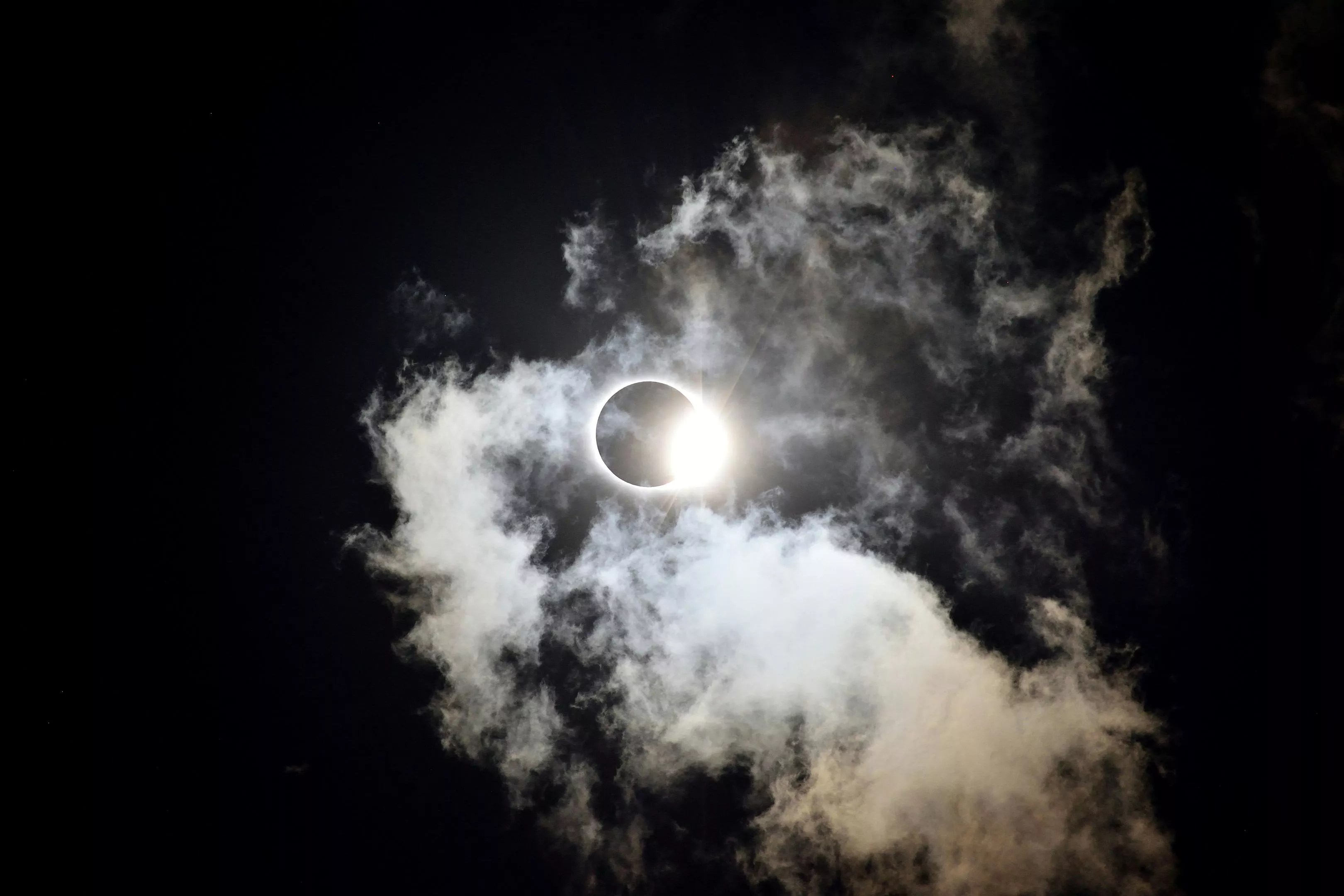
Taylor Smith/Unsplash

Audio By Carbonatix
It’s never a good idea to make eye contact with the big hot ball in the sky – especially during long periods of time, like the upcoming total solar eclipse. Dallas is one of several lucky cities in the path of totality on April 8, and the area is expected to have over a million wide-eyed astronomy lovers staring up at the sun. Now, let’s just hope the weather cooperates.
No matter where in North Texas you decide to watch the solar event (be warned: not all cities will see the eclipse in totality), astronomers and eye specialists say everyone should wear special eclipse eyewear to prevent harmful UV rays from reaching your retina. With them, you can safely watch the moon make its way across the face of the sun. Without them, you risk permanent damage to your retinas.
“Basically, you’re frying the retina from within,” says Dimitrios Karamichos, executive director at the North Texas Eye Research Institute. “[The sun] is such a powerful light source, so the photoreceptors that are a major cell type in your retina can be killed. And the retina doesn’t really have any nerve receptors, which means that damage can happen without us feeling it.”
This type of damage is called solar retinopathy, also known as eclipse retinopathy. Symptoms can take anywhere from a few minutes to several days after sun exposure to appear and range from blurred vision to central scotoma, a blind spot in the middle of your vision. But with the proper eyewear, Karamichos says you should have no problem viewing the eclipse.
“You just can’t afford to take them off,” Karamichos says.
“Basically, you’re frying the retina from within.” – Dimitrios Karamichos, North Texas Eye Research Institute
Eclipse glasses, which are more than 1,000 times darker than your everyday pair of shades, ensure harmful UV rays can’t reach your retina. Safe solar viewers have to comply with the ISO 12312-2 international standards. While all pairs of eclipse glasses that comply with these standards should have the certification printed on them, counterfeit sellers may print the same information on their fake products whether it’s true or not. Susanna Kohler, an astrophysicist and communications manager and press officer for the American Astronomical Society, says if you’re unsure about the origin of your eclipse glasses, you can conduct an easy series of at-home tests to check their legitimacy.
First, try on a pair of solar viewers indoors. If you can see anything other than complete darkness, like furnishings or walls, that’s a bad sign and likely means your specs aren’t ISO-compliant. If you look at really bright indoor lights or the flashlight on your smartphone, you shouldn’t see more than a faint pinprick of light. If your glasses pass the first test, you can try briefly looking directly at the sun, which should be dim and comfortable to see.
Another thing Kohler says to look for on your eclipse glasses is the address of the manufacturer, which is required to be printed. If that’s missing, it’s another indicator that the glasses might be counterfeit.
“But in general, just by looking at the glasses without those tests, it’s really hard to tell whether or not they are legitimate,” Kohler says.
Kohler and others at the AAS recommend that those still looking to buy glasses in time for Monday visit the society’s website for a complete list of vetted vendors of solar eclipse glasses. These manufacturers can help reference which in-person and online products are safe to purchase.
Others who think they have found a loophole and plan to view the eclipse through an indirect lens, like their camera or telescope, should reconsider. Kohler says without a proper solar filter on the other end of your lens (not eclipse glasses, those will melt), you’ll damage your eyes and might also ruin your lens.
While it is technically safe to watch the totality phase of the eclipse without eyewear, the stage lasts less than five minutes, and any stage of partial eclipse phases before and after the midpoint can damage your eyes. To reduce any risk, Karamichos recommends eclipse viewers keep their eyewear on for the entire solar event, as glasses can be lost at crowded viewing events that will take place across the city.
Folks without eclipse eyewear can find other indirect ways to experience the rare solar event. One method is a “pinhole projection,” which you can do by turning your back to the sun and projecting any small hole through anything from interlaced fingers to a hole-punched piece of cardboard. While looking at the shadow you create on the ground, you should see the shape of the sun change throughout the eclipse phases. The same effect will also be created naturally through other objects, like leaves in the trees.
Weather permitting, the beginning of the partial eclipse will be visible to Dallas on April 8 at 12:23 p.m. The moon will continue to move across the sun until the astronomical spectacle ends at 3:02 p.m. Totality will occur at 1:40 p.m. and last just under five minutes. If you look directly at the sun for prolonged periods of time during the partial eclipse phases and begin to notice any symptoms like distorted vision, blind spots or eye pain, Karamichos says you should seek medical attention as soon as possible.